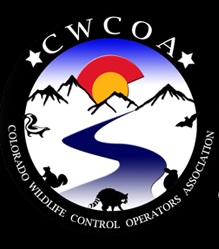(Vol 2, Art 2, April, 2013)
Coyotes are incredibly adaptable and resilient. They have expanded their range/distribution from the central plains and southwest deserts of North America in pre-colonial times to all 48 contiguous states and from the northern tip of Alaska to the isthmus of Panama. They are now found in almost all habitats, including downtown major metropolitan areas (e.g., LA, Phoenix, Denver and Chicago). Recent DNA evidence indicates coyotes migrated eastward via two main routes, a northern one through the Great Lakes region, where some hybridization with wolves occurred, and a southern route likely supplemented by human introductions. The two routes merge generally in Virginia.
A key to coyote adaptability and survival is their instinct or drive to exploit whatever environment they’re in to whatever level of dominance that circumstances/constraints allow. Another is their ability to be opportunistic generalists in diet. They can survive on as little as fresh cow manure, juniper berries or urban road kill. One coyote advocate in Denver describes them as the “ultimate flexitarian.”
Coyote abundance (i.e., density) in a given area (i.e., carrying capacity) is determined primarily by availability of food, followed by social dominance and territoriality. In historic western range densities are often less than 1 coyote/sq mi, although 2/sq mi is not uncommon. Some areas of Texas have densities as high as 5 or more/sq mi. Interestingly, some of the highest recorded densities are in urban areas like southern California and Chicago! Similarly, annual survival rates in urban areas are quite high (LA = 74%, Chicago = 62%) compared to rural Colorado (roughly 38%).
In a given population, typically the majority (60-90%) of adult females breed. The percentage of yearling females that breed varies with the level of winter food supply and the population level relevant to carrying capacity. Similarly, litter size varies with population density and available winter food. Litter size is typically 4-7, depending on population density, with 6 being about average.
Exploited populations (those impacted by hunting, trapping and predator control) certainly can exhibit a “rebound effect” when reduced below carrying capacity. Typically there will be increases in the number of breeding yearlings, litter size, survival rate of pups and rate of immigration. Those opposed to coyote control almost always argue this tendency, even claiming that killing coyotes actually results in increased coyote numbers, i.e., the more you kill, the more you get.
Theoretically this rebound effect could elevate total coyote numbers briefly at post-whelping, but ultimately it’s an oxymoron because abundance is primarily determined by food availability. In addition, the overall population would be very young and mortality would be very high. Furthermore, this argument cuts both ways. It suggests that hunting/trapping are actually beneficial to coyote populations.
Coyotes generally give birth in April. Pup eyes open at about two
weeks. Young begin emerging from the den around 3 weeks and are usually
weaned at 5-7 weeks. Typically 70–75% of coyote populations are 1-4 years
old. Studies indicate that 60-75% of coyotes don’t survive past their
first year. Coyotes 2-3 years old have the highest survival rates.
Those in the 4-8 year old range are fairly common. However only a few
make it past 11 years in the wild. A few in the 13-15 year range have
been documented. Humans, by far, are the greatest cause of mortality.
Depending on population dynamics, 15-50% of a given population are solitary or
transitory individuals. The rest being alpha pairs or family groups
(i.e., packs). Several studies indicate coyotes disperse a mean distance
of around 18 miles.
Several diseases can seriously impact coyote populations, including parvovirus, distemper and sarcoptic mange. Pups are most vulnerable, whereas older, surviving adults develop antibodies against parvo and distemper. Mange is currently rampant in many western coyote populations.
Recent research has turned up a few other interesting observations. One is that coyotes tend to hunt first with their eyes (vision), then ears (audition), and lastly nose (olfaction). See any application for callers? Trappers?
Coyotes are sure interesting!
